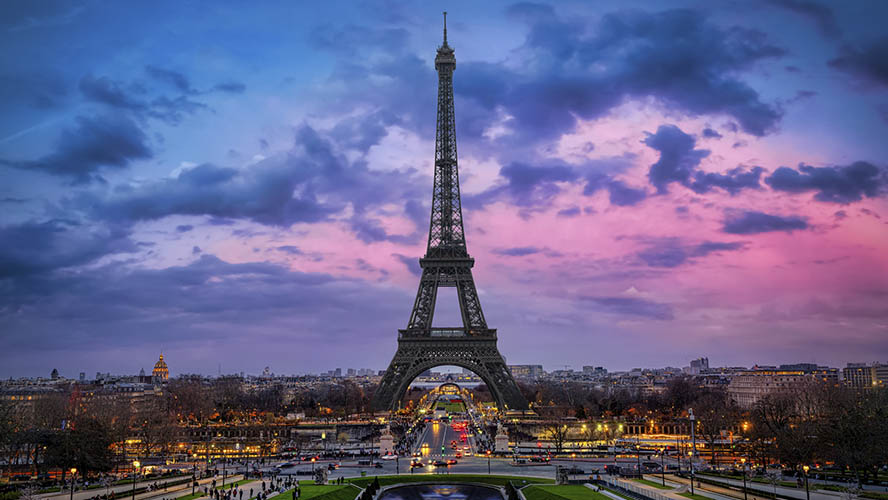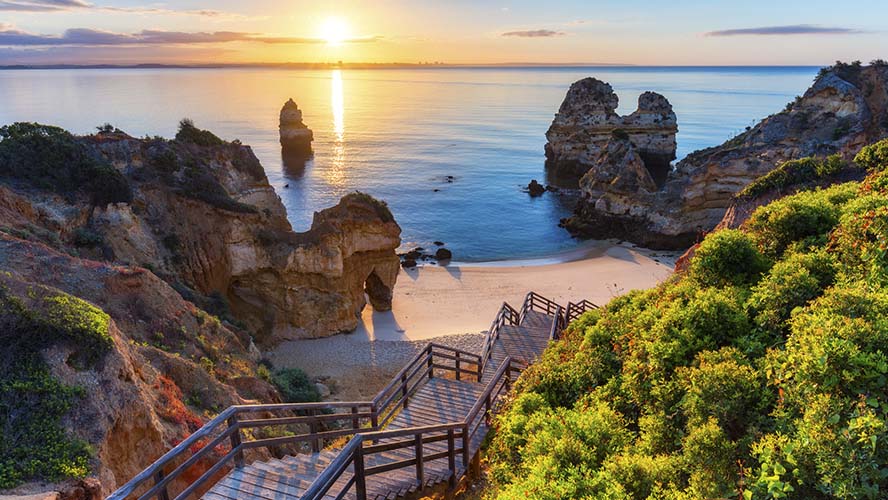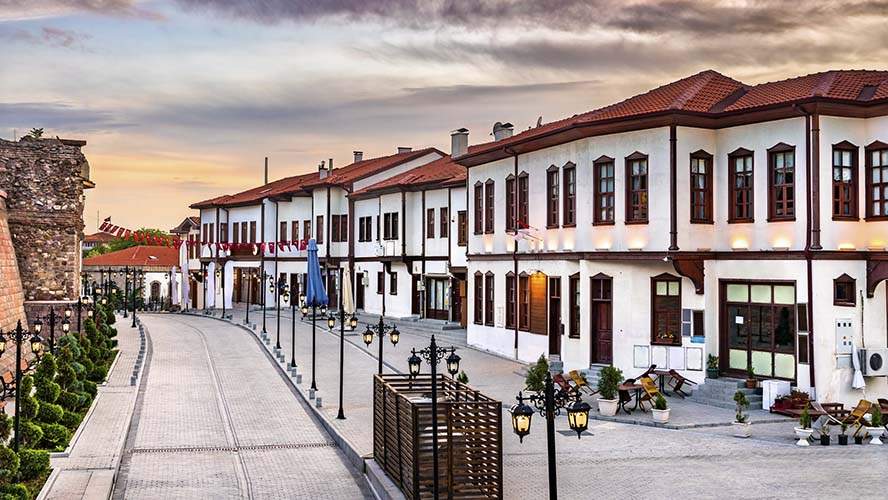From the golden dome of the Alexander Nevski Cathedral in Sofia to the remains of ancient Thrace in Perperikon, Bulgaria is a country where history has created a beautiful cultural mosaic down the centuries. The monasteries, such as the Rila monastery, rise up amid sacred mountains, while towns such as Melnik have taverns dating back hundreds of years hidden in the rock. On the coast, Nessebar unfurls its collection of medieval churches on the seashore, while Sozopol retains intact the atmosphere of a Greek fishing village. To explore Bulgaria is to wander in the labyrinth of narrow streets in Plovdiv’s historic quarter, to discover the hidden frescoes in the prehistoric churches of Ivanovo, and to walk among the peaks of the Pirin National Park. Bulgaria is a country of contrasts, where Ottoman architecture coexists with Byzantine remains and nature offers everything from golden beaches to glacial lakes at an altitude of over 2,000 metres. This article will take you on a not-to-be-missed tour of some of Bulgaria’s most fascinating corners.
- Sofia: the city where East and West meet
- Plovdiv: the age-old ‘city of the seven hills’
- Veliko Tarnovo: the former capital of the Tsars
- Nessebar: the island of 40 churches and endless blue
- Sozopol: the artistic soul of the Black Sea
- Nature in Bulgaria: from legendary lakes to sacred mountains
- A UNESCO Heritage Site: cultural and spiritual treasures
Sofia: the city where East and West meet
Bulgaria’s capital, Sofia, is one of Europe’s oldest cities, with a history stretching back over 2,000 years. Its strategic position at a crossroads of trading routes means that various civilisations have left their mark here: the Thracians, Romans, Byzantines and Ottomans have influenced the city’s architecture, culture and way of life.
The city’s emblem is the Alexander Nevski Cathedral, an impressive Orthodox church with a golden cupola that gleams in the sun. Inside, the frescoes and religious icons transport visitors back to another age. Not so far away, the Ivan Vazov National Theatre with its imposing Neo-Classical façade is a symbol of Bulgarian cultural splendour and a nerve centre for the performing arts.

But there’s more to Sofia than mere history. The city is dynamic and modern, with wide avenues, specialist cafés and a buzzing nightlife. Vitosha Boulevard is its business artery, where boutiques, art galleries and restaurants with terraces make for a lively scene. And for nature lovers, Mount Vitosha, visible from everywhere in the city, offers hiking trails in summer and skiing in winter.
Plovdiv: the age-old ‘city of the seven hills’
Plovdiv is the jewel in Bulgaria’s cultural crown, and one of Europe’s oldest cities, with an uninterrupted history stretching back over 6,000 years. Its historic quarter is a veritable open-air museum, with houses from Bulgaria’s Renaissance painted in bright colours, cobbled streets that climb hills, and Roman ruins that rise up in the midst of modern cafés and galleries.
Plovdiv’s Roman Amphitheatre, dating from the second century AD, is one of the Balkans’ best-preserved Roman structures, and still hosts concerts and plays. Its steps afford an impressive panoramic view of the city, especially at sunset.

But Plovdiv is not only about the past. Its Kapana neighbourhood (meaning ‘the cheat’ in Bulgarian) is the artistic heart of the city. Once it was a district occupied by craftsmen: today it is a bohemian neighbourhood full of alternative bars, design shops and street art murals. The area’s creative energy has transformed it into a European cultural flagship, helped by its designation as European Culture Capital in 2019.
Veliko Tarnovo: the former capital of the Tsars
Veliko Tarnovo is one of Bulgaria’s most picturesque and evocative cities, built on hills overlooking the snaking river Yantra. It was the capital of the Second Bulgarian Empire (1185-1396), and a medieval ambience still pervades every corner.
The city’s main attraction is the Tsarevets Fortress, an imposing citadel surrounded by stone walls, with the remains of palaces, churches and watchtowers. To wander around this place is to travel back in time to the glory days of the Bulgarian Tsars. At night, a spectacle of light and sound tells the story of the city with images projected onto its ancient walls.

Near the fortress, the district of Samovodska Charshia keeps alive the artisan soul of the city, with ceramics workshops, antique shops and taverns where you can enjoy traditional dishes such as banitsa (a cake made with cheese and egg), and tarator (a cold yogurt and cucumber soup).
Nessebar: the island of 40 churches and endless blue
Lying on a small peninsula jutting out into the Black Sea, Nessebar is one of Bulgaria’s most beautiful cities and a historic treasure that UNESCO has declared a World Heritage Site. With over 3,000 years of history, this city has witnessed the passage of Thracians, Greeks, Romans, Byzantines and Ottomans, each having left its mark on the fascinating architectural heritage. The narrow, cobbled streets are scattered with old Byzantine churches and wooden houses dating from the Bulgarian Renaissance that overlook the sea, creating a scene that looks like something out of a fairy story.
Nessebar’s cobbled streets twist and turn among over forty churches, many of which date back to between the tenth and fourteenth centuries. The Church of Saint John Aliturgetos, with its delicate arches built of red brick and white stone, is exceptionally noteworthy for its ornamentation, despite having been partly destroyed by an earthquake during the fourteenth century. Not far away, the Church of Christ Pantocrator stands out with its elaborate external mosaics; it is currently in use as an art gallery.

Apart from its religious heritage, Nessebar offers golden sandy beaches and quiet coves, perfect for those looking to relax by the sea. The local cuisine, rich in fresh fish, mussels and squid, is best enjoyed in the taverns opposite the port, where each mouthful is accompanied by the sound of the waves.
Sozopol: the artistic soul of the Black Sea
Further south, Sozopol is another of the Black Sea’s great treasures. Founded by Greek settlers in the seventh century BC, Sozopol’s old town retains a spellbinding atmosphere, with its houses built in dark wood, its hanging baskets of flowers, and its narrow streets leading down to the sea. This coastal area has been a source of inspiration for artists, writers and musicians who have found a refuge here for creativity in its sunsets and in the calmness of its waters.
Sozopol is also an artistic hub, with music and art festivals that culminate in September with the Apollonia Festival, Bulgaria’s most important cultural event. During this festival, the streets and squares come alive with open-air performances, contemporary art exhibitions and film screenings beneath the stars. This is the perfect time to mingle with the local artistic community and to discover the region’s vibrant cultural scene.

The beaches here are quieter than those of other coastal destinations and offer the ideal refuge for those wishing to unwind. The Central Beach and Harmani Beach are perfect for swimming in crystal-clear waters, while the little hidden coves around the old quarter tempt visitors to immerse themselves in the sound of the waves and the scent of the sea. And if you have a passion for archaeology, you won’t want to miss the Archaeological Museum, which exhibits treasures dating from classical antiquity and reveals the rich history of the region.
Nature in Bulgaria: from legendary lakes to sacred mountains
In Bulgaria, nature lovers will find a paradise of mountains, lakes and natural reserves that look like scenes from a painting. The country’s geographical diversity means that you can explore everything from snowy peaks to dense forests where wild fauna still thrives.
The Seven Rila Lakes, located at an altitude of 2,100 metres, are a spectacle of nature and a place of spiritual pilgrimage. Each lake bears the name of its distinguishing characteristic, such as ‘The Eye’ for its oval shape and transparent waters, or ‘The Kidney’ because of its unusual profile. In winter, the lakes are covered in a layer of ice that adds a touch of magic to the scene, while in summer they are a magnet for day trippers and photographers.

The Pirin National Park, with peaks that rise to 3,000 metres and ancient forests, is a heaven on Earth for hikers and mountaineers. The Vihren peak, the highest in this chain of mountains, offers challenging but rewarding trails with panoramic views extending to Greece and Macedonia. Along its paths, you can find endemic species such as the edelweiss flower, a symbol of purity and resistance. The region is also home to bears, wolves and lynxes, something that adds a touch of adventure to every hiking expedition.
The Rhodope Mountains, in the south, are home to authentic villages and legends about the origins of Orpheus, the mythical Thracian musician who could charm the gods. The region is scattered with little villages such as Shiroka Laka, where folk music and ancestral traditions are still kept alive. The Rhodope caves, such as the Devil’s Cave, are another impressive natural attraction, with karst formations that seem to have been carved by divine hands.
A UNESCO Heritage Site: cultural and spiritual treasures
Rila Monastery: the soul of Bulgaria set among sacred mountains
Rila Monastery, nestled in the mountains of the same name, is the most important symbol of the Bulgarian Orthodox faith and is one of the country’s most impressive monuments. Founded during the tenth century by Saint John of Rila, this monastic complex has for centuries been a spiritual and cultural centre, assuming a key role in preserving the Bulgarian identity during the period of Ottoman domination and remaining a place of pilgrimage to this day.

Its monumental architecture, with courtyards surrounded by arcades, golden cupolas and vibrant murals, transports visitors back to another age. The main church, with its iconic black-and-gold cupola, has frescoes painted by some of the finest Bulgarian Renaissance artists, such as Zahari Zograf. Every corner of the monastery is steeped in history, from the imposing Hrelyo’s Tower dating from the fourteenth century to the Monastic Library, a genuine treasure containing medieval manuscripts, historical chronicles, and valuable ecclesiastical documents.
The prehistoric churches of Ivanovo: sacred art carved into the rock
In northeast Bulgaria, the prehistoric churches of Ivanovo on the banks of the river Rusenski Lom are a complex of churches and monasteries excavated into the rock between the twelfth and fourteenth centuries. Unlike other medieval monasteries, these were not built on the ground, but carved directly into the cliff faces, creating a unique spiritual landscape.
What makes this complex so special is the quality of its frescoes, which have been admired down the centuries for their detail and vivid colours. The biblical scenes depicted on the walls of the complex (including the Last Supper and the Dormition of the Virgin) show the influence of Byzantine art, but maintain a distinctively Bulgarian style. These frescoes, painted by talented monks, have survived the passage of time, and still retain their expressive qualities and rich colour.
During the Middle Ages, the Ivanovo complex was a major religious centre and a refuge of hermit monks seeking the tranquillity of nature for their life of prayer. Although many of the churches are empty today, an air of mysticism, conducive to contemplation, still pervades.













































































